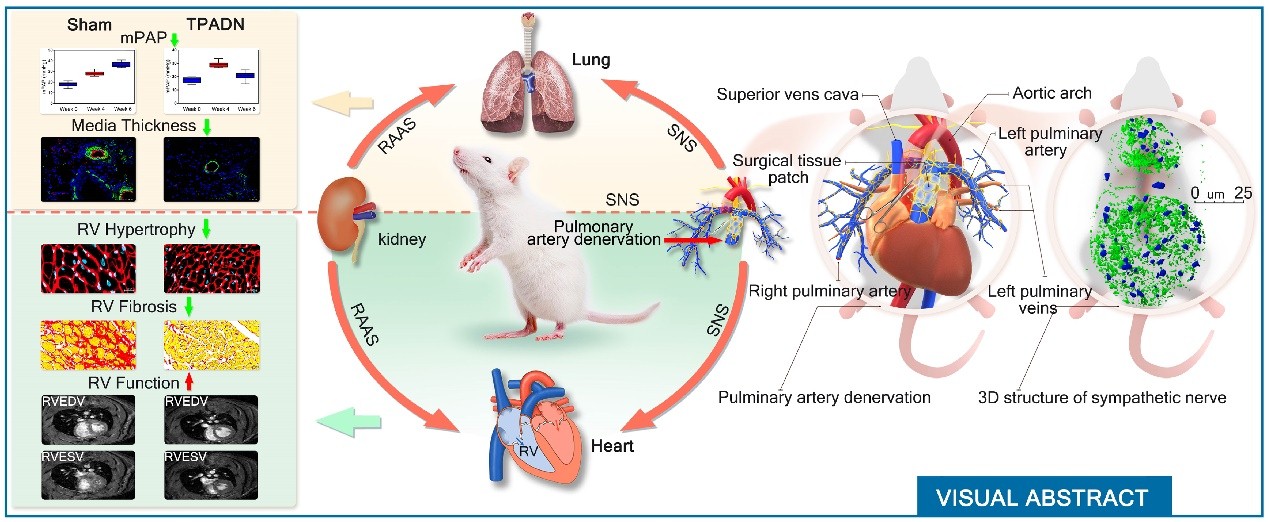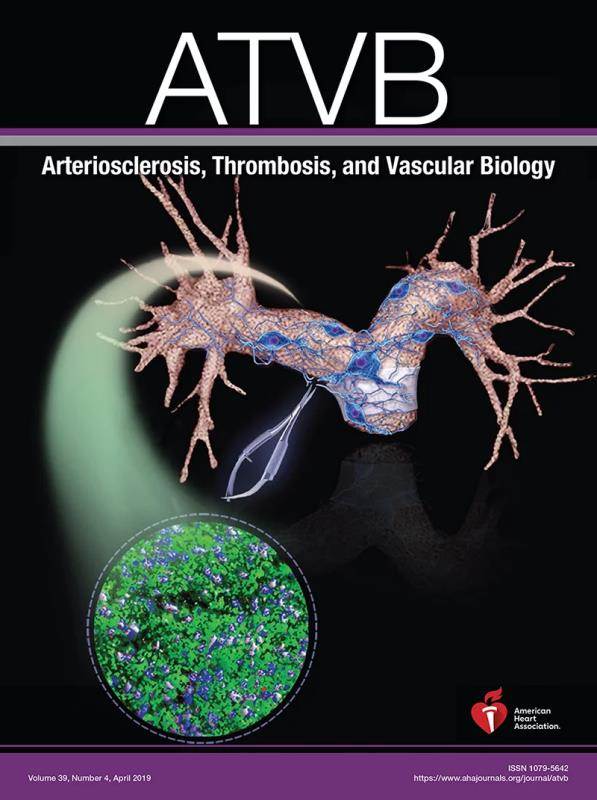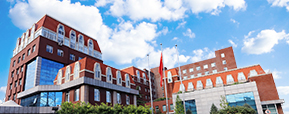Significant Progress in the Surgical Treatment of Pulmonary Arterial Hypertension by Cooperative Research of Chinese Scholars

Fig. 1 TPADN attenuated pulmonary arterial hypertensive progression by inhibiting excessive activation of the sympathetic nervous system and renin-angiotensin-aldosterone system neurohormone-receptor axes.

The cover image of the April 2019 issue of ATVB journal illustrates the distribution of SNs around PA and the diagram of TPADN operation.
A research group led by Prof. Hao Zhang, State Key laboratory of Cardiovascular Diseases, Fuwai Hospital and National Center for Cardiovascular Diseases, Chinese Academy of Medical Sciences, has made a significant progress in the surgical treatment of pulmonary arterial hypertension with the support of National Science Fund for Distinguished Young Scholars of China (81525002). Their recent paper titled “Transthoracic Pulmonary Artery Denervation for Pulmonary Arterial Hypertension: Sympathetic Nerve Distribution and Pulmonary Artery Remodeling” was published in Arteriosclerosis Thrombosis and Vascular Biology (ATVB) as a cover article in the April issue, 2019. The corresponding author is Prof. Hao Zhang from State Key Laboratory of Cardiovascular Diseases and Shanghai Children's Medical Center, and the first author is Dr. Yuan Huang from State Key Laboratory of Cardiovascular Diseases, Fuwai Hospital. The link of the paper is https://www.ahajournals.org/doi/10.1161/ATVBAHA.118.311992.
Pulmonary arterial hypertension (PAH) is a rare and refractory disease. It is difficult to reverse disease progression with traditional drugs or multi-targeted drug therapy. Patients’ long-term survival quality is relatively poor, with a high mortality rate. Moreover, the costly expenses for targeted drugs could certainly cause a heavy economic burden on patients and society. Therefore, it is extremely urgent to find more effective treatments.
The researchers explored the distributions of sympathetic nerves (SNs) around rat and human pulmonary arteries (PA) and identified numerous SNs in adipose and connective tissues around the main PA trunks and their bifurcations, which provided definitive evidence for the clinical translation of transthoracic pulmonary artery denervation (TPADN). By using two kinds of PAH models (Monocrotaline-induced and Sugen/Hypoxia-induced), the researchers demonstrated that TPADN completely and accurately removed the main SNs around PA and attenuated pulmonary arterial hypertensive progression by inhibiting excessive activation of the sympathetic nervous system and renin-angiotensin-aldosterone system neurohormone-receptor axes.
In contrast to percutaneous pulmonary artery denervation, TPADN procedure can completely and irreversibly remove the main SNs around the PA trunk and its bifurcation under direct vision, which correspondingly broadens and deepens the level of SN damage and consequently achieves complete denervation of PA. At the same time, the researchers used surgical tissue patch implants as an implantable physical barrier to cover the surgical areas after SNs stripping, which effectively prevented postoperative sympathetic nerve regeneration. In the future, with the help of cutting-edge thoracoscopic and near-infrared technologies for intraoperative imaging of thoracic SNs, the minimally invasive TPADN procedure can efficiently and accurately accomplish PA denervation, providing a promising treatment option for patients with PAH.
Contact Us

National Natural Science Foundation of China
Add: 83 Shuangqing Rd., Haidian District, Beijing, China
Postcode: 100085
Tel: 86-10-62327001
Fax: 86-10-62327004
E-mail: bic@nsfc.gov.cn
